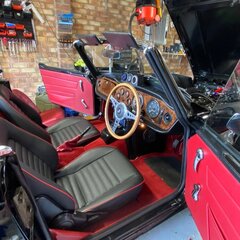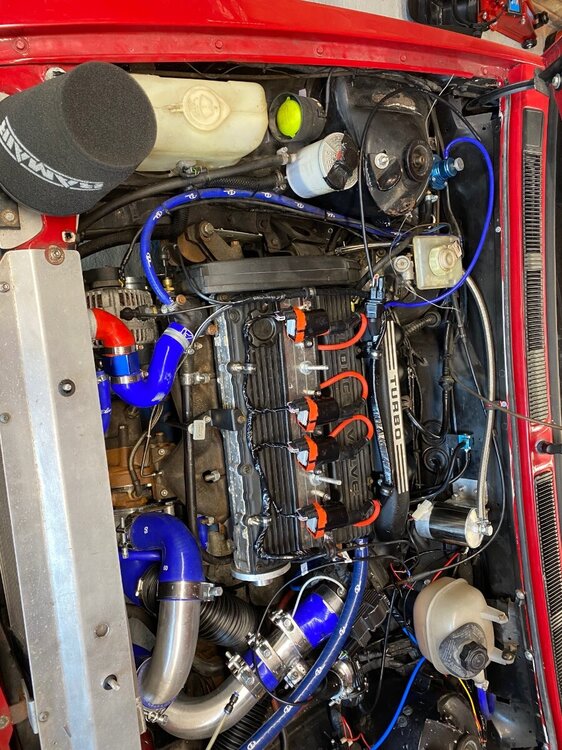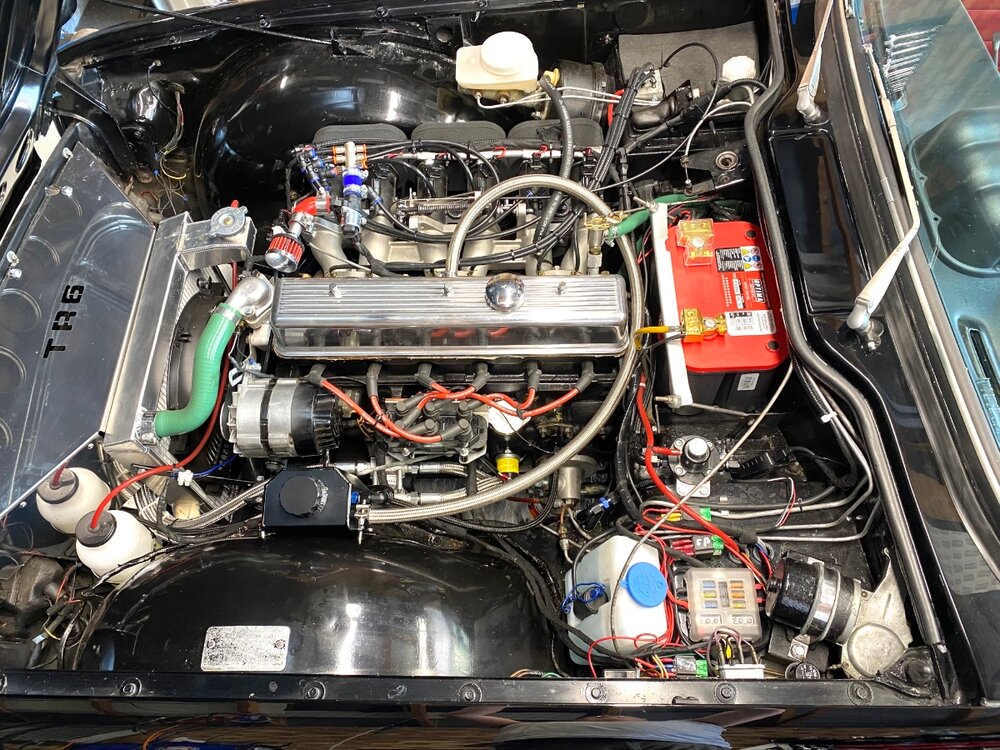-
Content Count
291 -
Joined
-
Last visited
Content Type
Profiles
Forums
Calendar
Posts posted by FatJon
-
-
£200 is ridiculous. Even my very greedy Audi dealer only charges £60 for this. You can buy an Autel 200 and a phone app for about £70. It does all the Landrover diagnostic functions including the BC electronics. I bought one for my Discovery to code new keys and it’s saved me a fortune since. In fact at £300 per key it payed for itself 5x over on day 1.
https://www.amazon.co.uk/Autel-Bluetooth-Scanner-Systems-Diagnoses/dp/B07QCT1PC5/ref=asc_df_B07QCT1PC5/?tag=googshopuk-21&linkCode=df0&hvadid=226557876382&hvpos=&hvnetw=g&hvrand=6252294922831618573&hvpone=&hvptwo=&hvqmt=&hvdev=m&hvdvcmdl=&hvlocint=&hvlocphy=1006735&hvtargid=pla-765077803134&psc=1
-
Keith, welding aluminium is very challenging at first, even with an AC TIG. With MIG I have had no luck at all. You need special rollers, the steel V profile rollers will squash the soft aluminium wire and jam frequently. The soft wire also has a tendency to bend and jam in the pipe/torch unless it's short and as straight as possible. You will certainly need argon or helium and you need to throw quite a lot of current at the weld as aluminium conducts heat away from the weld much faster than steel. My advice is try it but don't spend a lot of money on a big cylinder until you are sure it's worth it. AC TIG welders are very much cheaper than they were a few years ago but still have a steep learning curve. It's taken me some years to get proficient. In fact I would not go so far as to say proficient, I can usually make an acceptable job but not by any means like you would see from a true professional who does it all day every day.
Cleanliness is king with aluminium. You cannot weld through the oxide coat and neither can you see it, but it is there unless you cleaned the weld area within the last few hours. You can unpack 2 new, shiny and apparently spotless pieces of aluminium and find them virtually impossible to weld until you clean them.
Use a clean stainless brush and/or stainless wire wool, not brass or mild steel. A bit of spray brake cleaner after brushing to degrease them before welding also helps a lot.
And good luck!
-
Marco
to elaborate a little on Hamish's picture there are 3 possible variants.
1. Aluminium rockers direct to steel shaft
2. Aluminium rockers but bushed with some bearing material onto steel shaft
3. Needle roller bearings between rocker and shaft
This complicates the question about how much oil is needed, especially as I have not yet found a supplier for any of the 3 variants who has stock. My plan is to see what I can get and then make some tests before deciding on oil needs. I'm not sure the needle roller bearings are a great idea as the shaft is a small diameter so not many needles and high point loads on each contact area. They are all rollers in terms of how they apply force to the tip of the valve but only number 3 is a roller in terms of how it bears on the shaft.
-
1 hour ago, BlueTR3A-5EKT said:
Does Racetorations have stock? https://www.racetorations.co.uk/product/roller-rocker-set-tr5-6/
Unfortunately not since they are 4 minutes drive from me.
-
Well, I think I will skip the oil feed then. I will check the rockers furthest away from the head for sufficient oil just to be sure.
I suppose it makes sense to protect the rather pricey crankshaft and bottom end at all costs unless there is a very clear and obvious problem at the top. With a hand toleranced oil pump I don't think pressure should be a problem and I'm super careful about cleanliness. The block has been tanked and chemically cleaned, plus I've just spent an hour with a borescope stuffed in every oilway and have applied repeated brushes and flushes to get them perfectly clean.
Now to making a few phone calls to see if anyone can actually supply me a set of roller rockers while I'm still young enough to walk to the garage and fit them without assistance. Pretty sure some of the US suppliers will be able to pull a set off the shelf but the shipping and taxes are punitive.
Thanks for all the comments and advice.
-
2 hours ago, BlueTR3A-5EKT said:
I have high ratio roller rockers on a 4 cyl that has no additional oil feed.
Running as sweetly now as it always has after 25k road going miles.
Rocker set came from Kingston Sportscars - Tony Dean, 20 years ago.
Do your rockers run directly on the shaft or are they bushed? I wonder if some are bushed and others not and that might be the difference in oil requirements. The Rimmer and Revington ones appear to be without bushes.
-
1 hour ago, stuart said:
Then you have something not right as there should be more than that up there.
Stuart.
Yes, hence building a new engine. It was getting a bit low on oil pressure and breathing a fair bit. The car was very nicely rebuilt in terms of body and chassis before I bought it but I suspect the engine wasn't given quite the same attention. I figured I could build a new engine before spring then drop it in and not lose any summer fun. Getting some of the special bits has been more challenging that expected but other than those rockers it's all here now and the machining is done so just a matter of assembling it all.
-
Cheers Stuart. I just put an enquiry into Revington to see if they can do better on delivery. Was happy to wait as all the other bits were also on long delivery like crank and pistons but now everything is here other than the rockers and it's holding me up. Will take a look at the orifice on the banjo and evaluate. Maybe braze it up and re-drill 0.8mm. I'm sure they don't need a lot of oil up there but from experience with my current standard engine there's a world of difference between not much and pretty much none, which is what I see up there now. Put it this way I can do the tappets by ear with the engine running and not make much mess!
-
Dear All,
looking for some advice on this subject. There are differing opinions on adding the extra oil feed to the rockers but my supplier of roller rockers (Rimmer, if they ever arrive, 5 months and counting) says this is required for them. Other suppliers, eg Revington say no oil mod needed.
The engine is a steel cranked near race spec unit which I'm currently building. I have seen some test data which suggests there is no significant loss of pressure -
https://www.triumphexp.com/forum/tr6-tech-forum.2/rockershaft-auxillary-oil-line.1356411/
and other empirical evidence to the contrary.
The main reason I'm going with the roller rockers is that I have heard lots of bad reports about the quality of aftermarket shafts and rockers so I figured that getting a full new setup which has been around for some years makes sense given the scale of the engine costs so far. Also my big valves are very big and any significant valve guide wear could be a problem. If nothing else the rollers will help in that department by not laterally loading the valves so much.
Has anyone got first hand experience of roller rockers over the longer term either with or without the extra oiling mod?
Jon
-
The exhausts run right under the gearbox mount. It's probably a bit marginal and when it's hot and softer it's got too much movement.
-
-
-
Jochem, COP is maybe not ideal unless you use coils with a short HT lead rather than true pencil type. The pencil coils are designed to go in a hole which supports them, like on a modern 16v engine. If you have them hanging off a TR6 plug they will suffer from vibration failure.
I use these on most applications, http://www.efiextras.co.uk
about halfway down the page.
Though not on my TR, that has a 6 tower coilpack and uses wasted spark in pairs. There’s a convenient place to sit the coilpack on the block under the middle two plugs.
-
21 hours ago, barkerwilliams said:
I see lots of drills at auction that have failed a PAT test and sell for little more than scrap value. Isnt thare an auction site near you?
Alan
Not sure I would want to be using one that has failed a PAT test. Of course I may be using one that would fail a PAT test but I would draw the line at using one that I knew was faulty for sure.
-
Not a tr6 or gt6 engine. They both have the engine mounts on the cylinder block. The one in the picture has the mounts on the engine front plate like the 2000/2500 saloons. That means it has the wrong front plate and backplate for use in a TR6. So it could be a 2000 or a 2500 but will need the plates swapping over to go into a TR6. You might get away without changing the front plate but the backplate must be changed or the engine will lean.
-
Felt channels are always the favourite. I tried all the witchcraft fixes on my TVR slow windows. Lubes, alignment, mechanism etc. The final and successful fix was to replace the felt channels. Simple as that, and a fraction of what I had already spent on not fixing the problem.
-
-
1 hour ago, astontr6 said:
TR6s use a resistive wire pink in colour in the harness which reacts with the voltage dropping down to 6 volts after starting.
Bruce.
Only on post 72 cars. This one is a J plate so it won't have a ballasted ignition system. At least that is what the schematics say and my 1970 does not have a ballast.
-
-
9 minutes ago, hurlbird said:
So i installed the whole system in his car. Finally got it to stop leaking and assumed I was all set. For a test I put vacuum to the system off the PCV line and the clutch went rock hard! the opposite of what I was expecting, making it inoperable. I assume something is connected improperly. HELP!
 -John
-John
I simply disconnected the PCV from the T and connected to the Servo. No idea how much Vacuum just that as the source.
A photo of how you connected everything would maybe help. This is a very standard procedure. Seen it done on several cars without this problem. Maybe you have in and out reversed on the remote servo hydraulics?
-
The valve lifter is absolutely inspired! Beats a coil of rope stuffed down the plug hole.
-
After more thought..
5cm suggests that the shaft splines have not yet gone into the plate. Stick it in a gear and rotate the whole box a little from side to side, that’s my method. But that will need the starter out of the way.
-
I have done this many times on many cars. I have always found that the final push into the spigot bearing often requires quite a lot of wiggling and some brute force pushing whilst wiggling. Rarely has the clutch centering tool done a good enough job to make things 100% easy. Even on a lift with 2 big chaps it can be a struggle. Sometimes it’s worth loosening the clutch cover bolts and double checking the centering, especially if the tool is a slack fit in the spigot. On occasions i have loosened the clutch bolts until the plate is quite is quite loose, then push in the the box, then pull it back off carefully and tighten the clutch cover bolts.
I don’t think the starter would affect things at all as it’s not going to be engaging the flywheel teeth in it’s deactivated position but it may be easier if it was out of the way.
-
2 hours ago, unclepete said:
Likewise the Brake Servo? With the Bahstuck manifold there is only 1 takeoff for the Brake Servo, I have a suspicion this has been giving me problems with braking?
not a problem for the servo. It has a one way valve so each “suck” lowers the vacuum but it does not fill back up when the vacuum stops until the next induction. This means the servo does not get hammered like the regulator does.






Cylinder liners
in TR6 Forum
Posted · Edited by FatJon
Why liners? You can rebore to at least +60 thou and pistons are inexpensive.
A engine which runs well and doesn’t clank or smoke but has poor performance probably has fuel, timing or ignition problems.